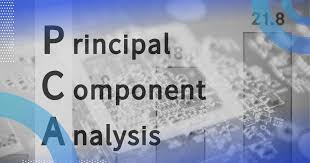Taking minutes is important for every meeting. And if you’re a secretary or you’ve been assigned the task of taking notes during a meeting, it is important to understand what to do and what not to do when taking minutes. Here, we have broken down the concept of meeting minutes with a sample of five steps you should include when writing minutes.
What Are Meeting Minutes?
Meeting minutes are a written record of the discussions and decisions taken at a meeting. These apply to any type of organization within a corporation, such as boards of directors, leadership teams, and investors.
Meeting minutes should be written for any meeting that requires an official record. This written record can then be used to inform team members who were unable to attend what occurred or to maintain track of choices and action items that can be revisited. As a result, minutes from earlier meetings can be used to make future organizational decisions.
Non-profits, government bodies, schools, public enterprises, and trade unions are among the groups that are typically required to keep meeting minutes.
Why Are They Called Meeting Minutes?
The term “minutes” has nothing to do with time, which is an interesting fact concerning meeting minutes. It actually derives from the Latin phrase “minutia” (which means trifles or details). Some sources claim that the phrase “meeting minutes” initially originated in the 18th century, directly from the Latin “minuta scriptura,” which means “little notes.”
Meeting minutes, in other words, are the specifics (or a brief summary) of what occurred during a meeting.
What are Meeting Minutes Used For?
The minutes of meetings serve as a historical record of the company’s conversations, decisions, and long-term strategy. Participants can use the meeting minutes as a record for future reference to identify what types of progress have occurred.
Individuals who did not attend the meeting but need to be informed about the decisions and next steps, on the other hand, might refer to the minutes.
What Are The Types Of Minutes For A Meeting?
Meeting minutes are classified into three sorts. They are as follows: action, discussion, and verbatim.
#1. Action Minutes
Action minutes are the most common sort of meeting minutes. This form of minute, also known as decision-only minutes, provides only the conclusions reached and the actions to be taken, not the discussion that took place throughout the decision-making process. The action minutes provide an executive summary of decisions made at a meeting. Meetings such as board, council, or hearing meetings frequently require action minutes.
Because it is only transmitted internally, it has an informal style and can be written as bullet points. The minute taker frequently participates in meeting discussions. These minutes are straightforward, can be recorded quickly, and are accurate.
#2. Verbatim Minutes
This is a verbatim record of all talks and decisions. A meeting’s verbatim minutes are a record of every single word said. They are frequently lengthy and difficult to browse for a specific piece of information. A verbatim record of a meeting is rarely required, with the exception of trial hearings and Congress.
Minutes taken verbatim are frequently rather long. It is difficult for the note-taker to capture verbatim minutes, and recording the dialogue with a microphone could be very useful for proofreading minutes. Verbatim minutes, as opposed to action and discussion minutes, focus on individual statements rather than general agreement.
#3. Discussion Minutes
Discussion minutes, also known as anecdotal minutes, are recordings of agreement from the talks that led to the necessary conclusions and actions. In most circumstances, discussion minutes are advised. The minutes taker should highlight important ideas raised by the group while avoiding recording personal remarks. Discussion minutes are similar to action minutes in that they include the discussions that occur during the decision-making process.
The discussion minute is the ideal option for running committee meetings, staff meetings, and the like. As a result, the minutes will be in the form of paragraphs, neatly divided into sections, and organized according to the sequence of discussions.
People are rarely addressed by name in this sort of minute since actions and discussions will be taken by a board and hence will be stated as board or committee in the minutes. The secretary will take the minutes because she will most likely not participate in the conversation and will thus be free to record the minutes appropriately.
Regardless of the type of minute, all minutes should be succinct and accurate, and in order to do so, the notes must be written correctly in the correct order and style. As previously indicated, make note writing as simple as possible by making some preliminary preparations prior to the meeting.
Minutes should also assist anyone who was unable to attend the meeting in understanding what occurred, eliminating the need for another meeting to clarify the same discussions.
Why Are Meeting Minutes Important?
Meeting minutes provide evidence of why and how a corporation made certain choices. This can be useful in answering any inquiries about decisions that have been made or discussions that have taken place.
The importance of meeting minutes can be broken down thus:
- They are a record of the decisions and acts of a group.
- They serve as a reminder of who was assigned tasks.
- Minutes act as proof of deadlines.
- They are useful for persons who are not there when choices are made.
Minutes of meetings can provide legal protection for your company in addition to serving as an official record of conversations and conclusions. Due diligence is frequently documented in company minutes. This can then be officiated and documented to prove the organization’s ethical and fair practices.
What Are The Five Steps That You Should Include In Writing Meeting Minutes?
Writing meeting minutes involves five steps:
#1. Pre-Planning
A well-planned meeting contributes to effective meeting minutes. It is much easier to record minutes if the Chair and the Secretary or minutes-taker collaborate to ensure that the agenda and meeting are properly thought out. For example, depending on the meeting structure and tools used, the minutes-taker could collaborate with the Chair to establish a document format that serves as an agenda as well as a minutes outline.
Steps involved in pre-planning include:
Stating the meeting agenda
At the absolute least, obtain a copy of the meeting agenda and use it as a reference or framework for taking notes, organizing your meeting minutes format, and creating the minutes – with the sequence and numbering of things on the meeting minutes matching those on the agenda.
Furthermore, the agenda and/or meeting notices provide information that must be included in the minutes, such as the names of all meeting attendees, including guests or speakers documents that are sent out with the agenda or handed out in the meeting – copies (digital or hard copy) of handouts should be stored with the meeting minutes for future reference and sharing with those who were unable to attend the meeting (and others as determined by the meeting)
Defining Expectations
When you embark on a new role as minutes-taker or Secretary, make sure to ask the Chair of the committee or Board what his or her expectations are of your role during the meeting, as well as the level of detail he or she expects in the minutes. For example, if your Board or committee is dealing with motions or voting on items/issues, determine whether you need to provide names of persons making motions, seconding motions, and so on. If you will be dealing with such procedures, you (and your Chair) should consult Robert’s Rules of Order.
#2. Taking notes during the meetings
Before you begin taking notes, it is critical to understand the type of information you will need to document during the meeting. As previously said, your organization may have mandated material and a specific mom format that you must follow, however meeting minutes typically include the following:
- The meeting’s date and time
- Names of conference attendees and those who were unable to attend
- Acceptance of prior meeting minutes or corrections/amendments
- Decisions on each item on the agenda
- New business items must be held over
- Date and time of the next meeting
How Do You Take Good Notes?
Here are some pointers to help you take better notes:
- Create an outline – As previously noted, having an outline (or template) based on the agenda allows you to simply scribble down comments, decisions, and so on under each item as you go. Consider putting space below each item on your outline for handwritten notes, then print these out and use this to collect minutes if you are taking notes by hand.
- Check off participants as they enter the room – if you know the meeting attendees, you can check them off as they come; if not, have people introduce themselves at the beginning of the meeting or circulate an attendance list that they can check off themselves.
- Record judgments or notes on action items in your outline as soon as they occur to ensure accuracy.
- If necessary, seek clarification. For example, if the group moves on without reaching a resolution or an obvious conclusion, seek clarification of the decision and/or future steps involved. You won’t be able to keep up if you try to take down the dialogue verbatim, so simply (and clearly) write (or type) only the choices, assignments, action steps, and so on.
- Record it – literally, if you’re worried about not being able to keep up with note-taking, consider recording the meeting (e.g., on your smartphone, iPad, recording device, etc.), but make sure participants are aware that they’re being recorded. While you should not utilize the tape to construct a word-for-word transcript of the meeting, it can be useful if you need clarification.
#3. Writing or transcribing minutes
When the meeting is finished, compile your notes and compose the minutes. Here are some pointers that might be useful:
- Try to write the minutes as quickly as possible after the meeting, while everything is still fresh in your mind.
- Examine your outline and make any necessary changes or clarifications. Check to ensure that all decisions, actions, and motions are fully documented.
- Make sure you include enough information.
- We propose giving a brief description of each action done, as well as the reasoning behind the decision, in the minutes of the Board of Directors.
- If there was a lot of debate before a motion was passed, put down the main arguments for and against it.
- Edit for brevity and clarity so that the minutes are easy to read.
Here are a few things to bear in mind when it comes to the meeting minutes format:
- Maintain objectivity.
- Use the same tense throughout.
- Other than recording motions and seconds, avoid mentioning names.
- Personal observations should be avoided; the minutes should only contain facts.
- Don’t try to summarize other documents if you need to refer to them. Rather, simply specify their location or attach them as an appendix.
#4. Sharing or Distributing Meeting Minutes
Before you distribute your meeting minutes, ensure that the Chair has reviewed, updated, and/or approved the minutes for distribution. Unless and until this occurs, they are no official record of a meeting. Minutes may also be formally authorized before the start of the next meeting, depending on your Board.
The method of sharing or distribution will be determined by the technologies used by you and your company. Because minutes and other paperwork might generate a lot of paper, it’s ideal to employ a paperless sharing approach. For example, if you’re using a word processing program (such as Microsoft Word) that doesn’t support online sharing, you might wish to make a PDF of the document and email it together with any attachments or meeting documents. If you’re all using Google Docs for meeting invitations, agendas, and other document sharing, you can simply “share” the document with that group after it’s finished. Committee or Board members can simply view the documents online, saving a few trees in the process!
Cloud sharing
If your organization uses a cloud-based membership management system, you can publish the minutes as a web page and restrict access to the committee or Board members based on your needs. You can construct a secure online Intranet for your Board and committees using members-only web pages.
#5. Filing/Storage of Meeting Minutes
Most committees and Boards examine and either approve or change the minutes at the beginning of the succeeding meeting. Once you’ve made any essential modifications, the minutes will then need to be archived for future reference. Some firms may keep these online (e.g., in Google documents or SkyDrive) and also back these up on an external hard drive. You may also need to print and store paper copies as well or submit these to a staff member or Chair for filing.
Meeting Minutes Sample
Here’s a sample of what a meeting minute looks like:
Is There A Template For Meeting Minutes?
Sure, there are templates for meeting minutes. Here’s one:
What Should Not Be Included In Meeting Minutes?
Meeting minutes should not include personal opinions or judgmental remarks. Every statement should be as objective as possible. Avoid taking notes on every single thing that is being said. The minutes should be brief and outline the main topics of the meeting.
In Conclusion,
Meeting minutes are critical – after all, they capture the essential information of a meeting. But taking and preparing minutes doesn’t have to be a burdensome chore. With what we’ve said in this article, Writing meeting minutes shouldn’t be much of a hassle for you anymore.
Related Articles
- FOCUS GROUP: Definition and Detailed Guide on How to Run a Focus Group Discussion
- HOW CAN GOOGLE ADS HELP YOU ADVANCE YOUR BUSINESS?
- BUSINESS PLAN OUTLINE: Developing a Business Plan Outline In 6 Easy Steps [Free Download]
- ZOOM FEATURES: Meaning, Pricing, and How to Use It
- COMMUNICATION COACH: Effective Communication






